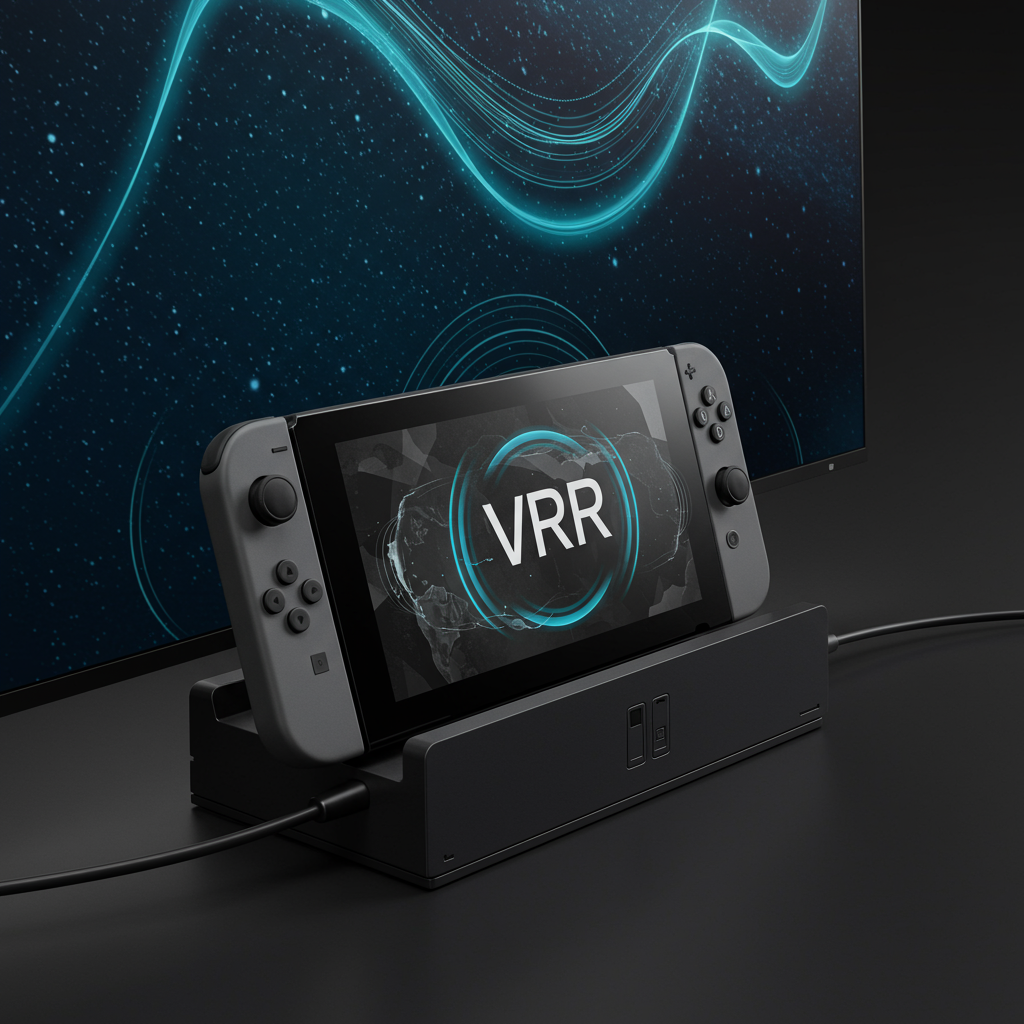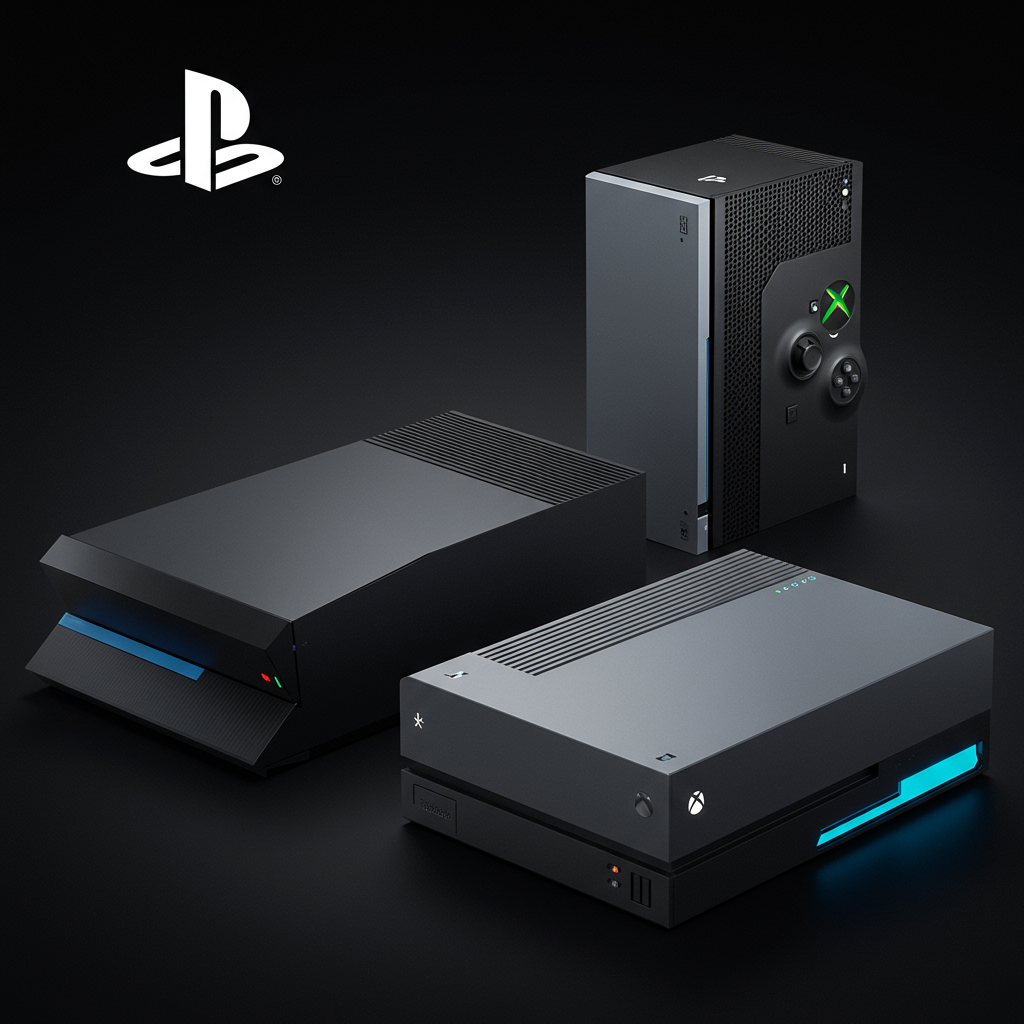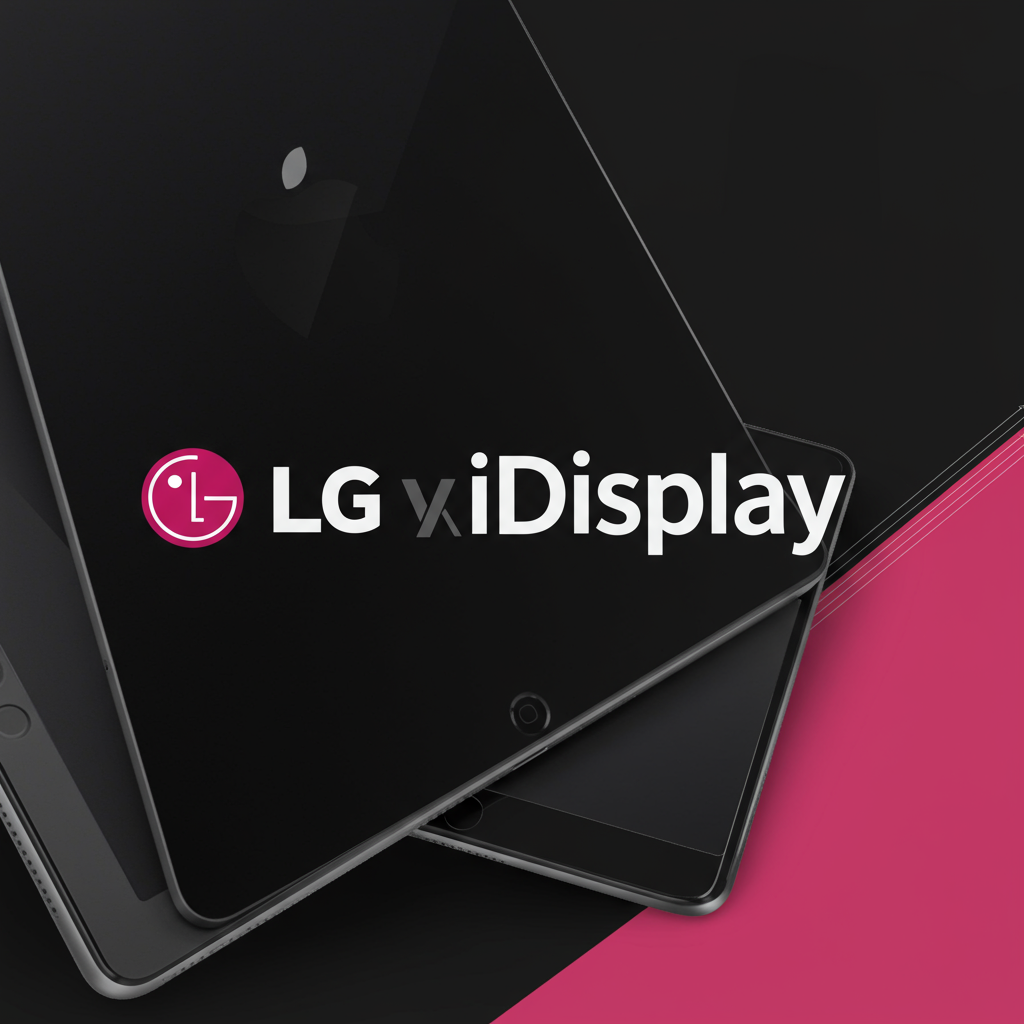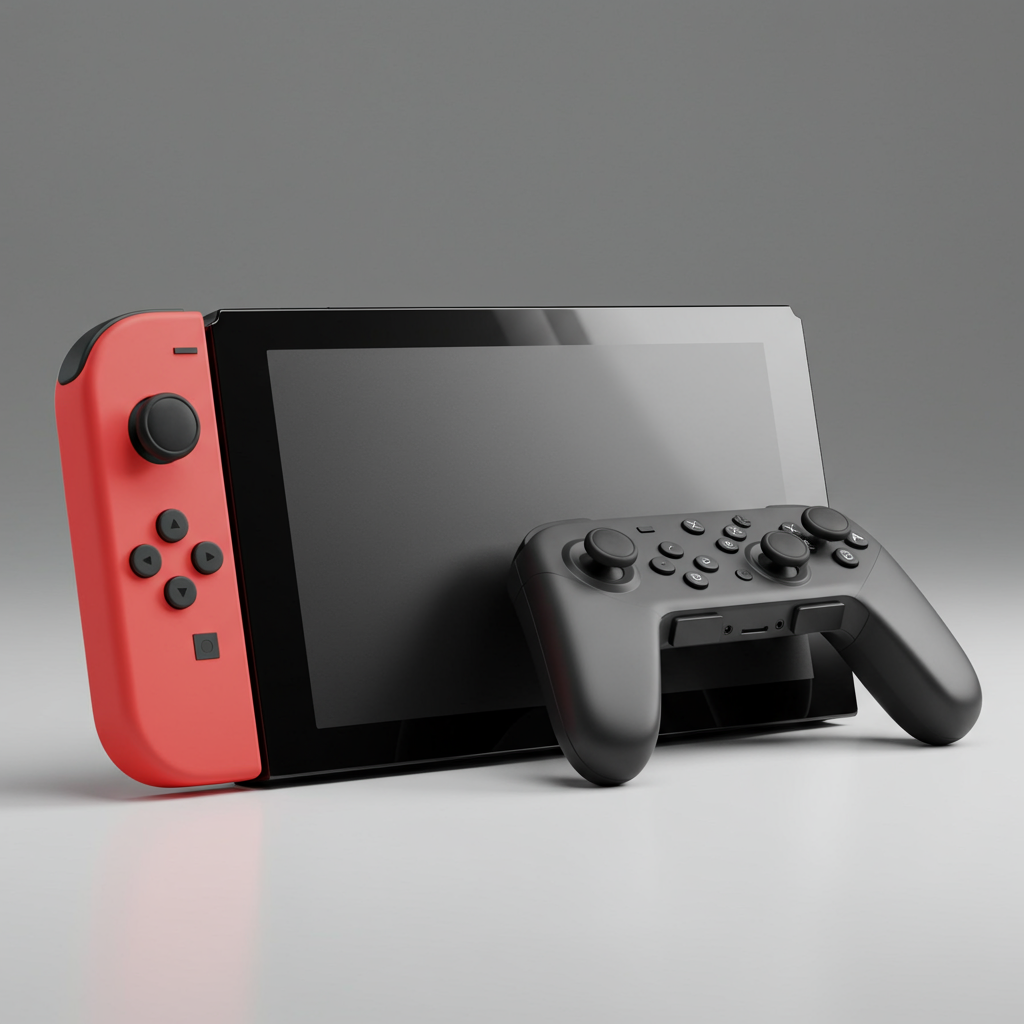An intriguing discovery has surfaced about the upcoming Nintendo switch 2. Reports indicate that the console’s official dock surprisingly supports Variable refresh Rate, or VRR. This advanced display technology smooths gameplay by syncing refresh rates. However, paradoxically, the Switch 2 console itself doesn’t utilize this feature when connected to the dock. This finding, revealed through testing with other handheld PCs, highlights the dock’s technical capability while raising questions about Nintendo’s decision.
This situation is particularly puzzling for tech enthusiasts and potential buyers. Understanding Variable Refresh Rate is key to appreciating this oddity. VRR allows your screen, like a TV or monitor, to adjust how often it refreshes itself dynamically. Instead of refreshing at a fixed rate (like 60 times per second), it matches the varying frame output from the console.
Understanding Variable Refresh Rate
VRR technology offers significant benefits for gaming. It helps eliminate screen tearing, a visual artifact where different frames are displayed simultaneously. It also reduces stuttering, which occurs when frame rates drop below the display’s fixed refresh rate. For a game running at a variable frame rate, VRR results in noticeably smoother visuals. This is especially valuable for performance-intensive titles or games that target frame rates that fluctuate. Many modern gaming consoles like PlayStation 5 and Xbox Series X/S support VRR. The fact that the Nintendo Switch 2 dock seems technically ready for it makes its absence with the console even more surprising.
The Unexpected Discovery Process
The revelation about the Switch 2 dock’s VRR capability didn’t come from Nintendo. Instead, it emerged from tests conducted by third-party tech reviewers, notably Sean Hollister at The Verge. The idea originated from discussions among the PC gaming community, specifically on the Steam Deck subreddit. These users explored creative ways to connect alternative devices to the new Nintendo hardware. The breakthrough involved bypassing the Switch 2 console entirely.
Testers used a common accessory: a female-to-male USB-C extension cable. This allowed them to plug other devices directly into the Switch 2 dock’s USB-C input. The goal was simple: see if the dock could pass video signals from sources other than the Switch 2 console itself. What they found was remarkable and unexpected.
Proof: The Dock Can Handle VRR Signals
Connecting other powerful handheld PCs to the Switch 2 dock yielded compelling results. Reviewers plugged in devices like the Valve Steam Deck, the Lenovo Legion Go S running SteamOS, and the Asus ROG Ally X using BazziteOS. These tests were conducted using VRR-compatible TVs, such as a Samsung S90C display. The outcome was clear and repeatable.
The connected handheld PCs were able to output high-resolution video through the Switch 2 dock. Critically, they successfully enabled Variable Refresh Rate on the television. Testers observed these devices outputting resolutions up to 4K. They also reached impressive refresh rates, confirming functionality at up to 120 frames per second. To ensure VRR was genuinely working beyond just an operating system flag, specific tools were utilized. The open-source VRRTest tool was employed. This confirmed that the TV display smoothly handled fluctuating frame rates, a key indicator of active VRR. This experimental setup definitively demonstrated the Nintendo Switch 2 dock’s technical ability. It can receive a VRR video signal and pass it through to a compatible display.
Nintendo’s Shifting Stance on Docked VRR
Adding complexity to the situation is Nintendo’s official communication regarding Switch 2 VRR support. Early information and promotional materials suggested that the console would support Variable Refresh Rate. This was initially implied for both handheld mode and when connected to a TV via the dock. Gaming enthusiasts were hopeful this meant tear-free, smoother gameplay on their large displays.
However, Nintendo later adjusted its stance. Mentions of docked VRR support were quietly removed from official websites and technical specifications. The company eventually issued a clarification. They apologized for the earlier communication, stating that VRR support would be limited. Nintendo clarified that the Variable Refresh Rate feature is exclusive to handheld mode. This official position directly conflicts with the technical capability demonstrated by testing the dock with other devices. Nintendo has not provided a specific technical reason for this limitation on TV output.
The Puzzling Absence in TV Mode
Given the evidence, the lack of docked VRR support from the Nintendo Switch 2 console is baffling. We know the Switch 2 console hardware is capable of VRR. It successfully implements the feature on its built-in 7.9-inch, 120Hz handheld display. Furthermore, the dock hardware itself has now been proven capable of passing a VRR signal. It works perfectly when other compatible devices are plugged into it.
So, why would Nintendo disable or simply not enable this feature for their own console in TV mode? This question remains officially unanswered. The benefit of VRR for the Switch 2 could be significant. Games on the new console aim for higher resolutions and frame rates. Titles like the Switch 2 edition of Breath of the Wild reportedly target a stable 60 FPS in 4K. Other games, like Cyberpunk 2077, offer performance modes targeting 40 FPS or aiming for 60 FPS but experiencing dips. In these scenarios, VRR would significantly smooth out visual judder caused by fluctuating frame rates below the display’s fixed refresh rate (like 60Hz).
Performance and Implementation Considerations
One potential explanation explored by tech experts involves the console’s VRR implementation or performance challenges. While VRR works in handheld mode, Digital Foundry reported observing “clear problems” with its performance in certain demanding third-party games. Titles like Cyberpunk 2077, No Man’s Sky (in 40fps mode), and Hitman: World of Assassination reportedly showed judder despite VRR being active in handheld. However, they also confirmed that VRR functioned correctly in Nintendo’s own “Welcome Tour” demo.
This suggests that VRR might be technically challenging for the Switch 2 hardware in complex scenarios. Perhaps Nintendo felt the current VRR performance wasn’t robust enough for the demands of a large TV screen. Richard Leadbetter from Digital Foundry speculated on this. He suggested it might be more likely that Nintendo’s initial announcement of docked VRR was an “honest mistake.” He finds it less probable that they would disable a fully functional feature right before launch due to performance issues alone, especially without a clear technical explanation surfacing.
Another theory suggests Nintendo might plan to enable docked VRR support later. This could potentially happen via a future firmware update. This might depend on further testing and optimization. However, for now, the feature remains unavailable where it could arguably provide the most visual benefit for many games running on a large screen.
Beyond VRR: A Pattern of Technical Questions
The Variable Refresh Rate puzzle isn’t the only technical quirk observed with the Switch 2. Some reports have also noted limitations or specific behaviors regarding the console’s USB-C video output. Early findings from The Verge touched upon restricted video capabilities and even initial incompatibility with certain webcams.
Additionally, while the new magnetic Joy-Con 2 controllers are praised for their attachment mechanism, questions remain about the long-term durability of their joysticks. Concerns about the potential for stick drift, a persistent issue with the original Switch controllers, haven’t been fully alleviated. The console also requires expensive new microSD Express cards for storage expansion. These various technical points contribute to a picture of Nintendo making specific, sometimes unexpected, hardware and feature decisions with the Switch 2. The VRR situation stands out as particularly confusing. It involves a seemingly capable dock and a console with existing VRR support, yet the combination fails to deliver this sought-after feature for TV play.
Frequently Asked Questions
Why doesn’t the Nintendo Switch 2 console use VRR when connected to its dock?
The exact reason remains unclear as Nintendo has not provided an official explanation. While the Switch 2 console supports VRR in handheld mode and third-party testing confirms the dock can pass a VRR signal from other devices, Nintendo currently disables this feature for TV output. Speculation suggests Nintendo might feel the console’s VRR performance isn’t optimized for larger screens, or that the initial announcement of docked VRR was simply an error they later corrected.
How was the VRR capability of the Switch 2 dock discovered?
The discovery was made by connecting other VRR-capable handheld PCs, such as the Steam Deck or Asus ROG Ally X, directly to the Nintendo Switch 2 dock using a USB-C extension cable. When these devices were connected to a VRR-compatible TV via the dock, they were successfully able to output and utilize Variable Refresh Rate. This testing proved the dock hardware itself is technically capable of passing through VRR signals.
Does the Nintendo Switch 2 console support VRR in handheld mode?
Yes, the Nintendo Switch 2 console does support Variable Refresh Rate when used in handheld mode on its built-in 7.9-inch LCD screen, which has a maximum refresh rate of 120Hz. This confirms that the console’s internal hardware possesses VRR capabilities. However, some reports indicate that VRR performance in handheld mode can be inconsistent or show judder in certain demanding third-party games, although it works correctly in specific demos.
Conclusion: A Curious Technical Paradox
The finding that the Nintendo Switch 2 dock technically supports Variable Refresh Rate, despite the console not using it in TV mode, is a fascinating paradox. It highlights a potential capability locked away for unknown reasons. The dock has proven its ability to handle VRR signals from other devices. The console itself demonstrates VRR functionality in handheld mode. This makes Nintendo’s official stance limiting VRR to handheld only all the more puzzling. Whether this decision is based on perceived performance limitations, is an honest mistake, or perhaps signals a feature planned for a later update remains a mystery. For now, players connecting their Switch 2 to a compatible TV via the official dock won’t benefit from the smoother, tear-free visuals that VRR provides, despite the hardware seemingly being ready. This oddity leaves tech experts and gamers alike scratching their heads, hoping for a future clarification or activation of this potentially valuable feature.




